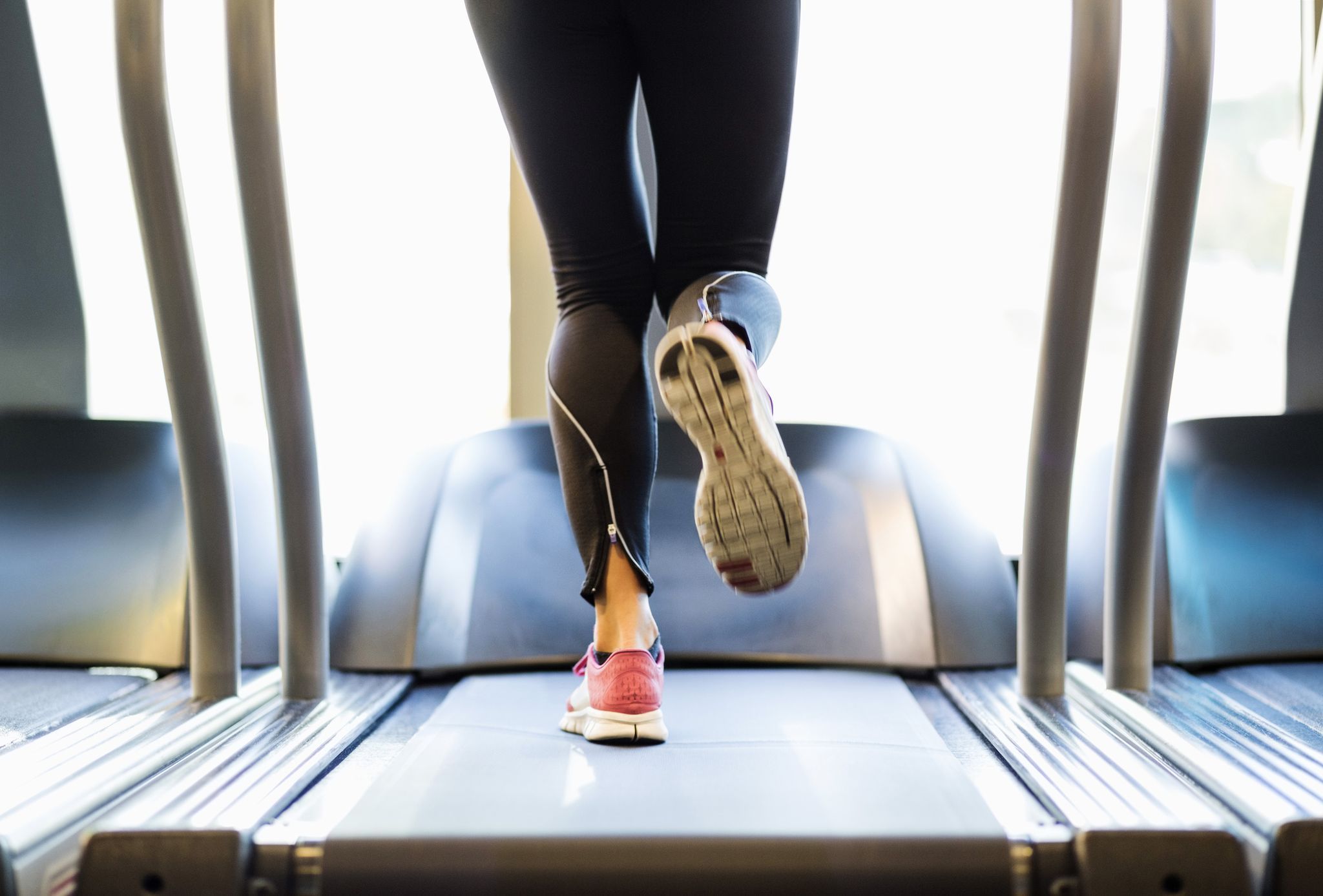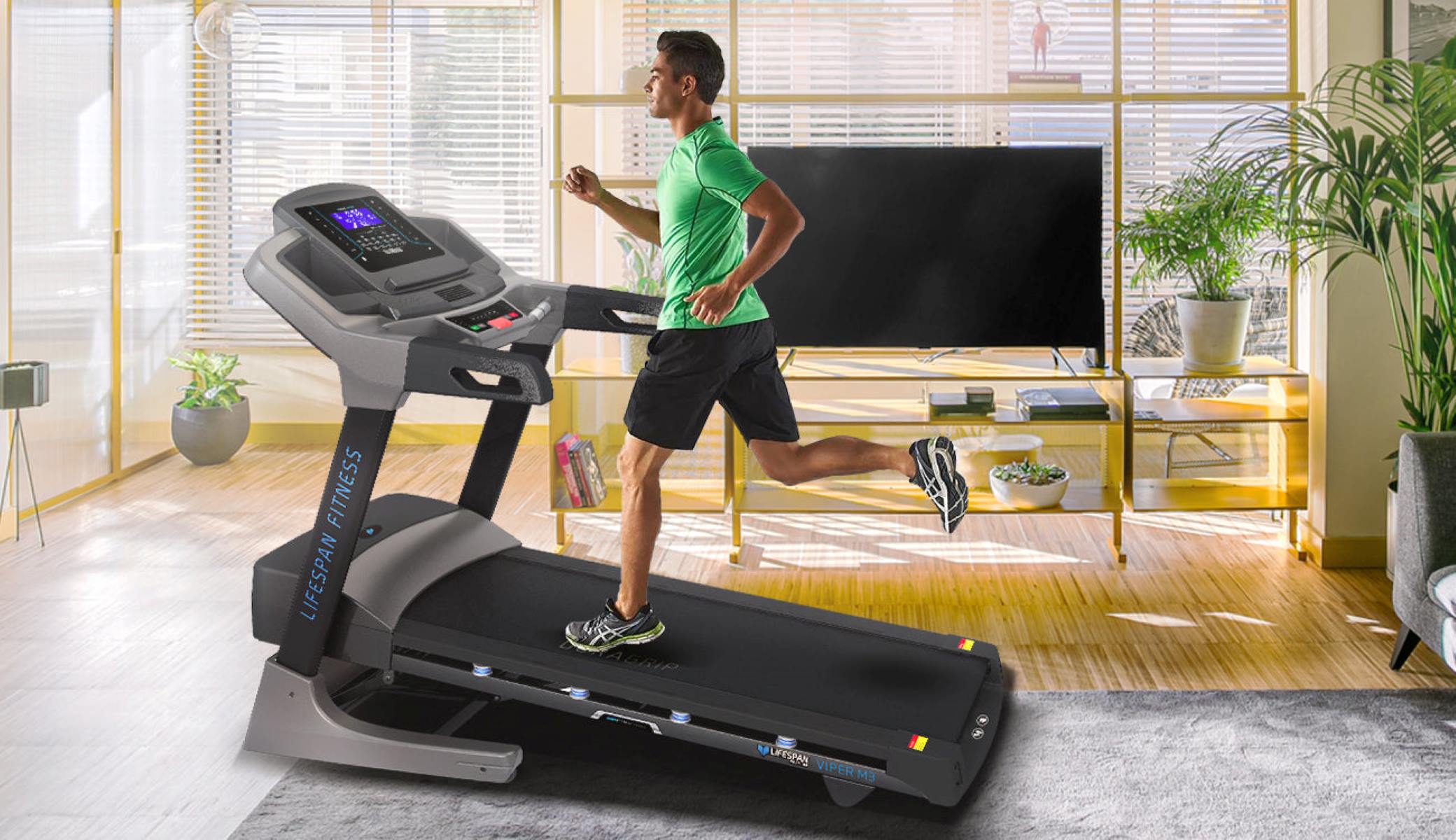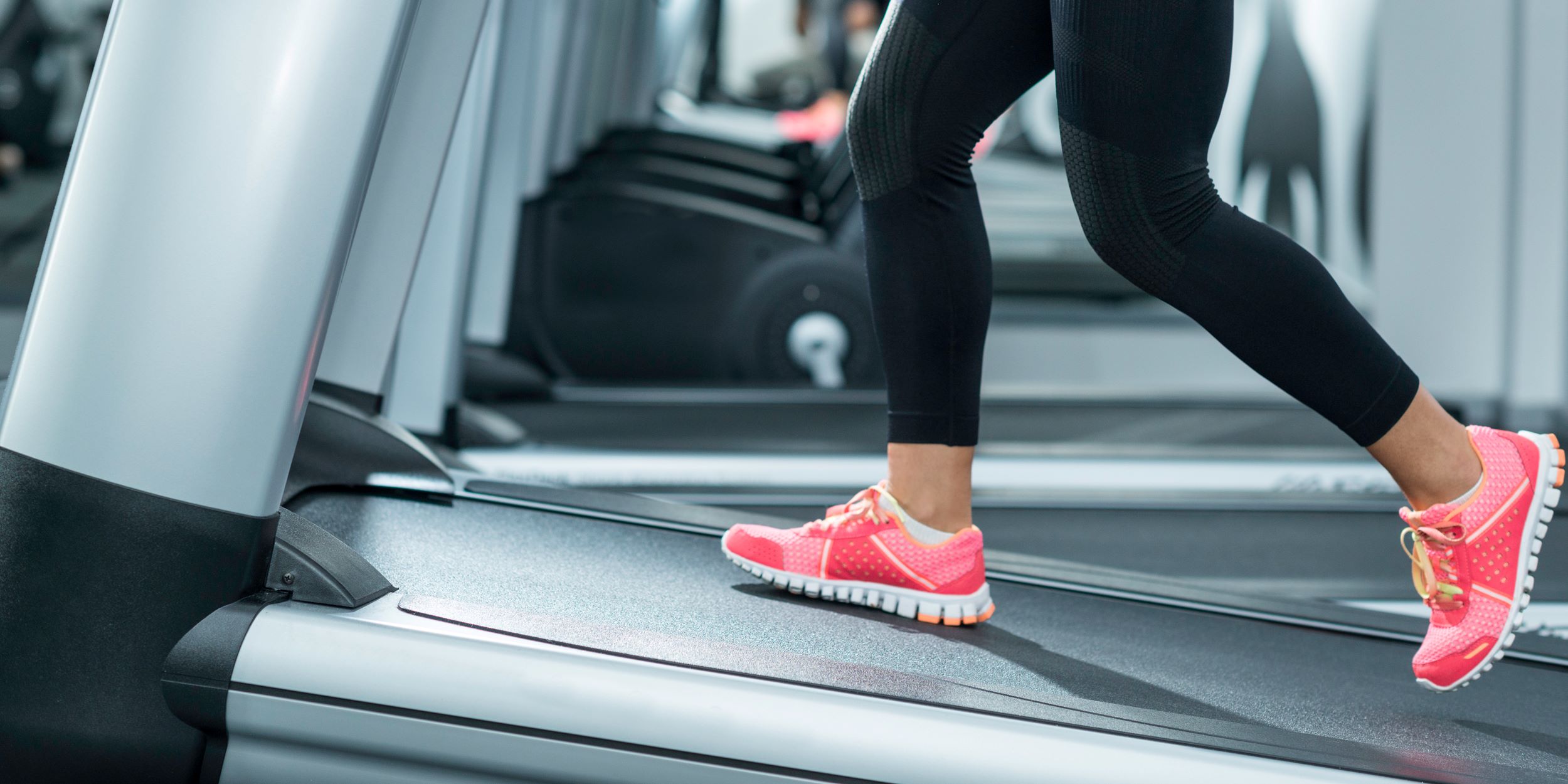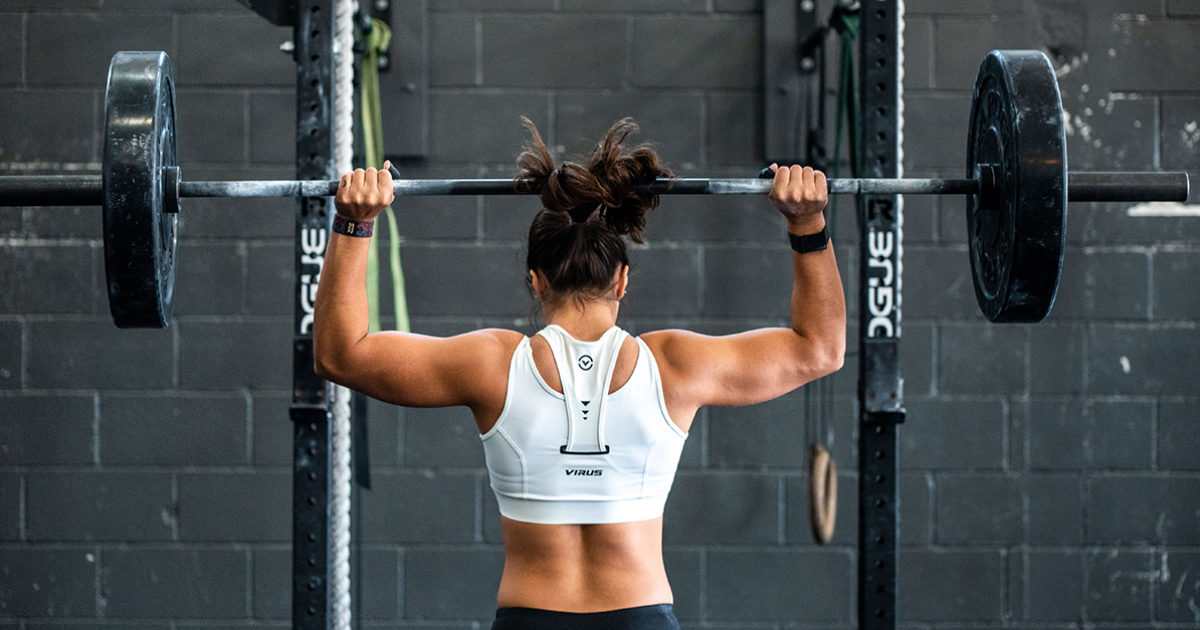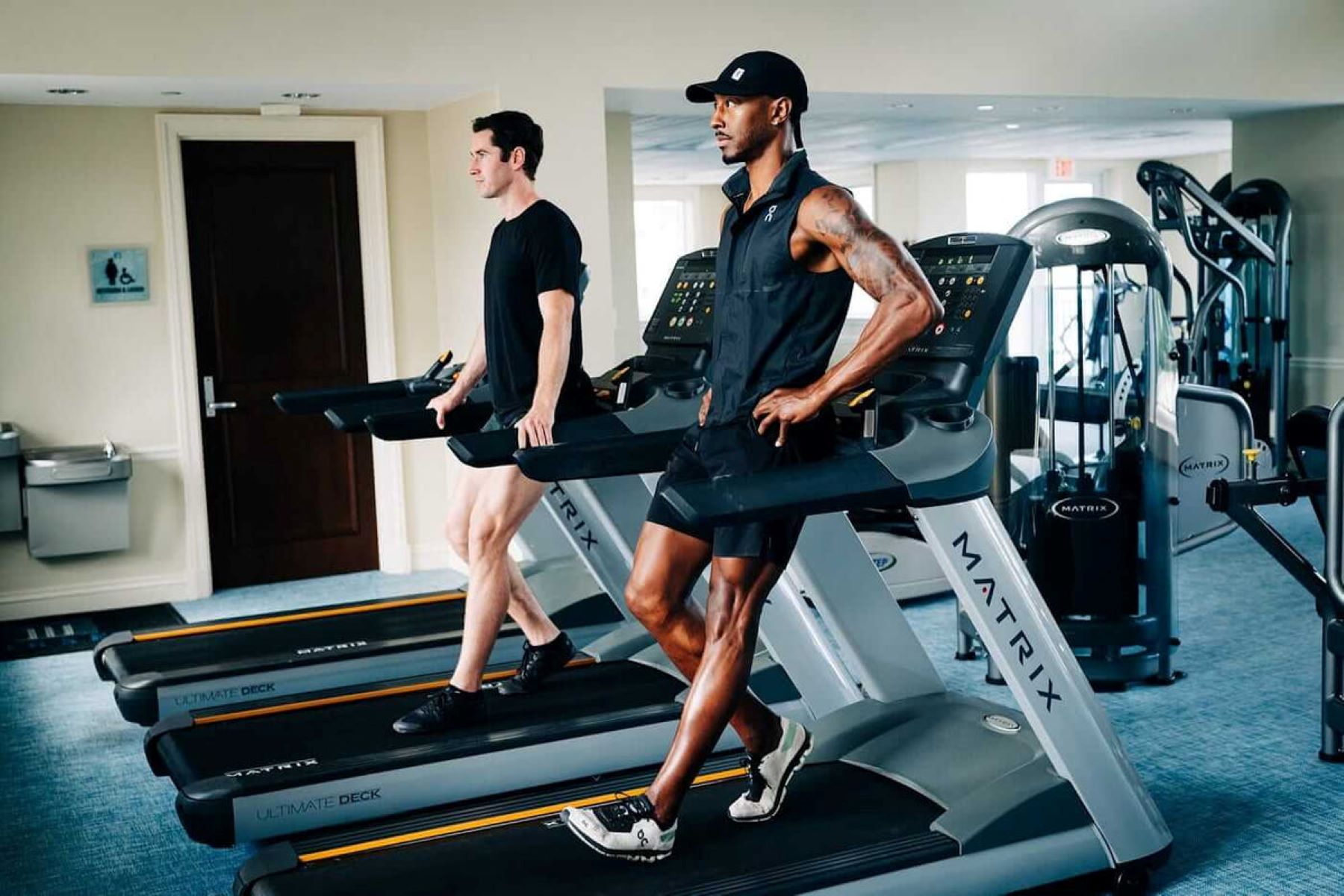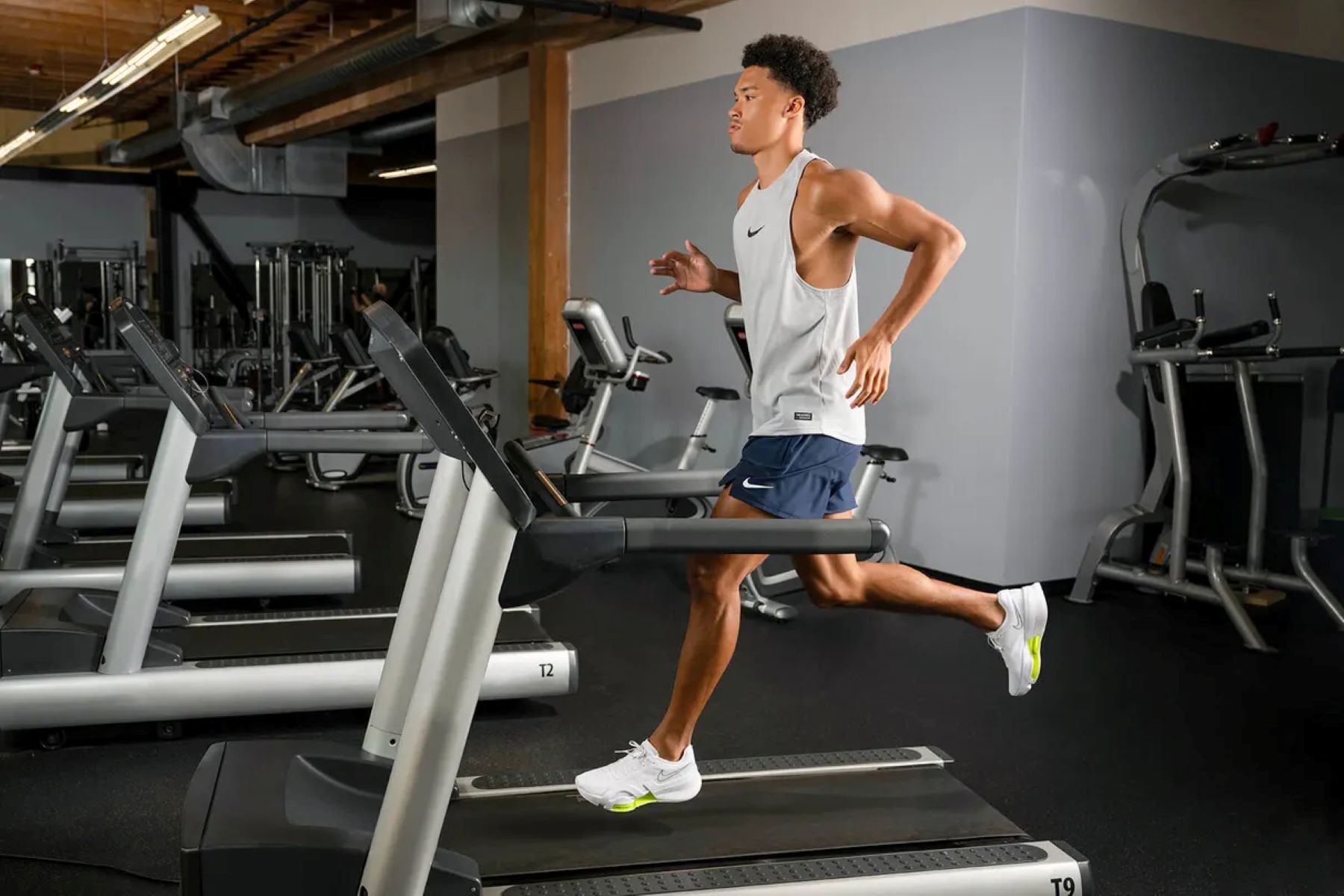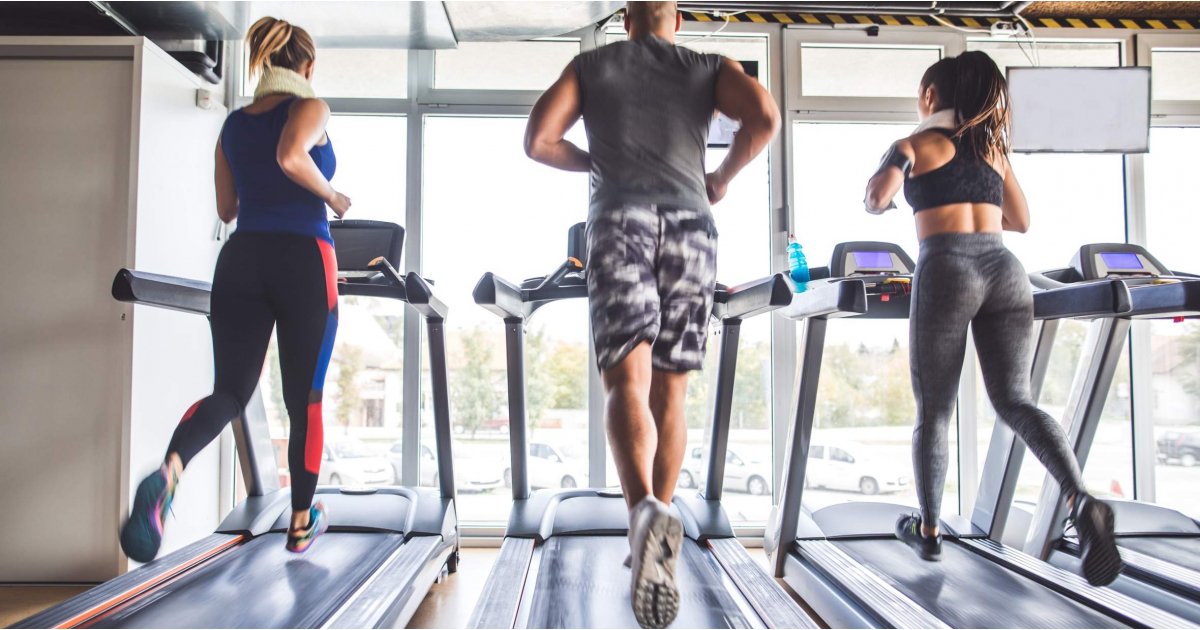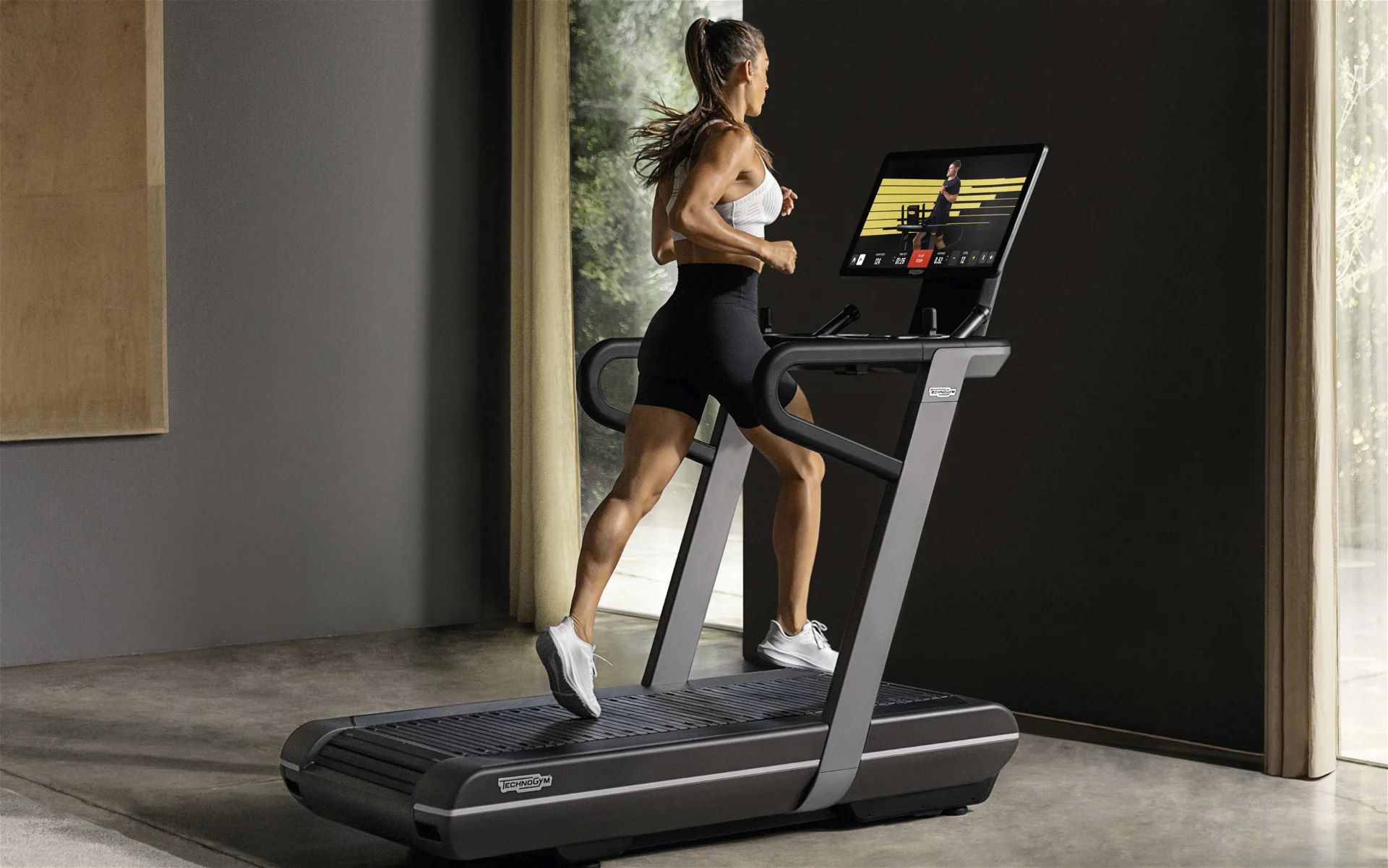

Featured
How To Build Glutes On Treadmill
Modified: March 1, 2024
Discover the best workouts and techniques to build your glutes on the treadmill. Follow our featured guide to sculpt and strengthen your lower body.
Introduction
Welcome to the world of treadmill workouts, where you can not only improve your cardiovascular health but also target specific muscles for toning and strength building. In this article, we will focus on one of the most coveted muscle groups – the glutes.
The glutes, consisting of the gluteus maximus, gluteus medius, and gluteus minimus, are not only responsible for giving your behind a shapely appearance but also play a vital role in maintaining proper hip, knee, and ankle alignment. Strong glutes can improve your posture, prevent injury, and enhance athletic performance. And what better way to work on your glutes than on a trusty treadmill?
The treadmill offers a versatile and convenient platform to target your glutes, offering a range of intensity levels and exercises. Whether you are aiming to firm up your backside, build muscle, or simply add variety to your routine, the treadmill can be an effective tool in your fitness arsenal.
In this article, we will explore different methods and exercises to effectively build your glutes on the treadmill. From incline walking to sprinting, lunges, and squats, we will cover it all. So, get ready to elevate your treadmill workout and sculpt your glutes to perfection.
Benefits of Building Glutes on Treadmill
Building strong glutes not only enhances your physical appearance but also offers a multitude of benefits for your overall health and fitness. And when it comes to targeting the glutes, the treadmill can be a game-changer. Here are some of the key benefits of building your glutes on the treadmill:
- Toning and shaping: The treadmill allows you to specifically target the glutes and engage the muscles in a way that promotes toning and shaping. By incorporating various exercises and techniques, you can develop strong and defined glutes that enhance your physique.
- Improved sports performance: Strong glutes play a crucial role in athletic performance. Whether you’re a runner, a cyclist, or participate in any other sport, powerful glutes provide stability, power, and improved efficiency in your movements. Building glute strength on the treadmill can help you excel in your chosen sport and reduce the risk of injuries.
- Enhanced calorie burn: The glute muscles are one of the largest muscle groups in the body. When you engage and develop these muscles, they require more energy, resulting in a higher calorie burn both during and after your workout. By building your glutes on the treadmill, you can maximize your calorie expenditure and support weight loss efforts.
- Improved posture and stability: Strong glutes are essential for maintaining proper posture and stability. They help support your lower back and hips, preventing muscular imbalances and reducing the risk of back pain and injuries. Building your glutes on the treadmill can lead to improved posture and overall stability in your daily activities.
- Increase in lower body strength: The treadmill offers various incline levels and exercise options that challenge your glutes and lower body muscles. By consistently incorporating glute-focused workouts on the treadmill, you can increase your lower body strength, which translates into improved function and performance in your daily life activities.
These are just a few of the many benefits you can reap from building your glutes on the treadmill. Whether you’re aiming for a better-looking backside, enhanced athletic performance, or overall strength improvement, incorporating glute-targeted exercises on the treadmill can help you reach your goals.
Proper Warm-up and Stretching
Before diving into any intense glute-building workout on the treadmill, it’s essential to properly warm up your muscles and perform stretching exercises. Warming up prepares your body for the upcoming activity, increases blood flow to the muscles, and helps reduce the risk of injury. Here are some key steps to follow for a proper warm-up before your treadmill glute workout:
- Dynamic warm-up: Start your warm-up with some dynamic movements that engage the glute muscles and loosen up your lower body. Examples include walking lunges, leg swings, high knees, and butt kicks. Perform each exercise for about 30 seconds to a minute, focusing on activating the glutes and getting the blood flowing.
- Treadmill walking: After completing the dynamic warm-up, hop onto the treadmill and start with a slow and comfortable walking pace for 5-10 minutes. This helps further warm up your leg muscles, including the glutes, and prepares them for the upcoming intensity.
- Stretching: Following the warm-up, it’s essential to perform static stretching exercises to lengthen and increase the flexibility of the glute muscles. Static stretches like standing glute stretches, figure-four stretches, and seated glute stretches can be effective in targeting and releasing tension in the glutes. Hold each stretch for 15-30 seconds and repeat on both sides.
Remember, a proper warm-up and stretching routine not only helps prevent injuries but also allows for better muscle activation and performance during the glute-building exercises on the treadmill. Incorporate these warm-up steps into your routine to ensure optimal results and reduce the risk of discomfort or strain on your muscles.
Setting the Treadmill Incline
When it comes to targeting the glutes on a treadmill, adjusting the incline is crucial. The incline setting determines the level of difficulty and the muscles that are primarily engaged during your workout. Follow these guidelines for setting the treadmill incline to effectively target your glutes:
- Gradual progression: If you’re new to incline training, start with a modest incline of around 3-5%. Gradually increase the incline as you become more comfortable and confident in your ability to maintain proper form and intensity.
- Proper form: To effectively target the glutes, it’s essential to maintain proper form throughout your workout. Stand tall, engage your core, and avoid leaning forward or backward. This helps ensure that the focus is on your glute muscles rather than placing unnecessary stress on other body parts.
- Listen to your body: The ideal incline setting varies from person to person. Experiment with different incline levels and pay attention to your body’s response. You should feel a challenging but manageable level of intensity in your glutes. Adjust the incline to find the sweet spot where you can effectively work your glute muscles.
- Vary the incline: Don’t be afraid to mix up the incline settings during your treadmill workout. Incorporating variations like uphill walking, interval training, or hill sprints helps engage different parts of the glutes and prevents plateaus in your progress. Be sure to give your body ample time to adjust to the changes in incline, especially when transitioning between high and low levels.
Remember to always listen to your body and make adjustments as needed. Properly setting the treadmill incline is key to effectively targeting your glutes and pushing yourself to new heights in your treadmill workouts.
Walking Uphill on Treadmill for Glute Activation
If you’re looking to activate and strengthen your glute muscles, walking uphill on the treadmill is an excellent exercise choice. Walking uphill targets the glutes, hamstrings, and calves, providing a low-impact yet highly effective workout. Here’s how to make the most of walking uphill on the treadmill:
- Start with a warm-up: Begin your workout with a proper warm-up routine as mentioned earlier. This prepares your body for the upcoming activity and helps prevent injuries.
- Set the incline: Adjust the treadmill to a moderate incline such as 5-7%. This will create resistance and challenge your glute muscles throughout the workout.
- Maintain proper posture: While walking uphill, focus on keeping an upright posture. Engage your core, relax your shoulders, and avoid leaning forward or backward. This posture ensures that the glutes are properly engaged and maximizes the effectiveness of the exercise.
- Take shorter strides: When walking uphill, take shorter strides compared to flat surfaces. This allows you to maintain balance and control, and puts more emphasis on the glutes and hamstrings.
- Engage your glutes: As you walk uphill, concentrate on actively engaging your glute muscles with each step. Squeeze your glutes at the top of each stride to intensify the activation. This conscious effort helps maximize the benefits of the exercise.
- Gradually increase intensity: If you find walking uphill to be relatively easy, consider increasing the incline or adjusting your pace to further challenge your glutes. Always listen to your body and make progress at a pace that feels comfortable yet challenging for you.
- Cool down and stretch: After completing your walking uphill session, gradually decrease the incline and pace to cool down. Then, finish your workout with some static stretching for the glutes and lower body in order to aid in recovery and flexibility.
Walking uphill on the treadmill is a great workout that specifically targets the glutes. By following these tips and incorporating this exercise into your routine, you can activate and strengthen your glutes while enjoying the benefits of this low-impact cardio workout.
Sprinting on Treadmill for Glute Development
If you’re looking to take your glute development to the next level, incorporating sprints into your treadmill routine can be incredibly effective. Sprinting not only targets the glute muscles but also engages other lower body muscles, making it a powerful exercise for overall lower body strength and power. Here’s how to make the most of sprinting on the treadmill for glute development:
- Warm-up is crucial: Before diving into sprints, ensure you have properly warmed up your muscles as mentioned earlier. This is essential for injury prevention and maximum muscle activation.
- Set the treadmill speed: Start with a moderate pace that allows you to comfortably sprint. Gradually increase the speed as you become more comfortable and confident in your sprinting abilities.
- Interval approach: Incorporating intervals is a great way to structure your sprint workout. Alternate between intense sprinting intervals and active recovery periods. For example, sprint for 30-60 seconds at your maximum effort, then recover with a slower pace or walk for 1-2 minutes. Repeat this cycle for a desired number of sets.
- Focus on form: While sprinting on the treadmill, pay attention to maintaining proper form. Keep your chest up, engage your core, and drive your arms dynamically. Focus on driving through your glutes and pushing off explosively with each stride.
- Vary the incline: To add an extra challenge and target your glutes from different angles, play with the incline settings while sprinting. Adding a slight incline can further engage your glutes and maximize the benefits of the exercise.
- Gradual progression: If you’re new to sprinting, start with shorter sprint intervals and longer recovery periods. As you build strength and stamina, gradually increase the duration and intensity of your sprinting intervals. Remember to listen to your body and progress at a pace that feels challenging yet sustainable.
- Cool down and stretch: Once you’ve completed your sprinting workout, gradually decrease the speed to cool down. Finish off with some static stretches for your glutes and lower body to promote flexibility and aid in recovery.
Sprinting on the treadmill is an excellent way to target and develop your glutes. By incorporating these tips and gradually increasing the intensity of your sprinting workouts, you can strengthen and sculpt your glutes while reaping the benefits of an intense cardiovascular workout.
Incorporating Treadmill Lunges and Squats
When it comes to glute development, lunges and squats are go-to exercises. Incorporating these movements on the treadmill adds an extra challenge and targets the glutes in a unique way. Here’s how to incorporate treadmill lunges and squats into your workout:
- Proper warm-up: Before starting any exercise, warm up your muscles as mentioned earlier. Increasing blood flow and loosening up the joints ensures maximum effectiveness and reduces the risk of injury.
- Treadmill lunges: Stand behind the treadmill and step onto the sides of the belt, placing one foot on the moving belt and the other foot firmly on the side. Holding onto the handrails for balance, perform alternating lunges by stepping forward with one foot onto the moving belt, bending both knees to lower your body down. Push through your front heel to return to the starting position. Repeat the lunges for a desired number of reps or time.
- Treadmill squats: Stand on the sides of the treadmill, facing forward. Position your feet shoulder-width apart and step onto the moving belt. Allow the belt to move at a slow speed to provide stability. Lower yourself into a squat position, keeping your knees behind your toes and your chest lifted. Push through your heels to stand back up. Repeat the squats for a desired number of reps or time.
- Form and technique: Focus on maintaining proper form throughout both exercises. Keep your core engaged, your chest lifted, and your knees in alignment with your toes. Take your time and perform the movements slowly and controlled, ensuring that the glutes are effectively targeted.
- Progression and variation: As you become more comfortable with treadmill lunges and squats, you can increase the intensity by adding weights or resistance bands. You can also vary the speed of the treadmill or incorporate different angles and incline levels to target the glutes from different perspectives.
- Cool down and stretch: Once you’ve completed your treadmill lunges and squats, gradually reduce the speed of the treadmill and step off safely. Finish your workout with some static stretches for the glutes and lower body to promote recovery and flexibility.
Incorporating treadmill lunges and squats into your routine is an effective way to target the glutes and strengthen your lower body. By following these guidelines and gradually increasing the difficulty, you can build stronger, firmer glutes while enjoying the convenience and versatility of the treadmill.
Utilizing Treadmill Hill Intervals
If you’re looking for an intense glute workout that simulates climbing hills or stairs, incorporating hill intervals on the treadmill is the way to go. Treadmill hill intervals effectively target the glutes, hamstrings, and calves while providing a challenging cardiovascular workout. Here’s how to utilize treadmill hill intervals to maximize your glute development:
- Warm-up: Start with a proper warm-up routine to prepare your body for the upcoming intense workout. This can include dynamic movements and a few minutes of walking or light jogging on a flat surface.
- Set the incline: Gradually increase the incline on the treadmill, aiming for a level that challenges your glutes, but still allows you to maintain proper form and intensity. An incline of around 8-10% is a good starting point.
- Sprint uphill: Begin with a high-intensity sprint on the incline for around 30-60 seconds, pushing yourself to your maximum effort. This engages the glutes and other lower body muscles, providing a powerful workout.
- Active recovery: After the sprint, lower the incline and reduce the speed to a comfortable walking or jogging pace. Use this active recovery period of 1-2 minutes to catch your breath and prepare for the next uphill sprint.
- Repeat the cycle: Alternate between intense uphill sprints and active recovery periods for a desired number of sets. Gradually increase the duration or speed of the sprints as your fitness level improves. Remember to listen to your body and adjust the intensity as needed.
- Cool down and stretch: Once you’ve completed the hill intervals, gradually decrease the incline and reduce the speed to cool down. Finish your workout with some static stretches, focusing on the glutes and lower body, to promote flexibility and aid in recovery.
Treadmill hill intervals provide a challenging and effective way to target the glutes and elevate your cardiovascular fitness. By incorporating these intervals into your treadmill routine and gradually increasing the difficulty, you can strengthen and tone your glute muscles while enjoying the benefits of a high-intensity workout.
Importance of Progressive Overload
When it comes to building your glutes on the treadmill, progressive overload is a key principle that should not be overlooked. Progressive overload refers to gradually increasing the intensity, duration, or difficulty of your workout to continue challenging your muscles and stimulating further growth and development. Here’s why progressive overload is essential for achieving optimal results in glute building:
- Muscle adaptation: To stimulate muscle growth, you need to provide a stimulus that is greater than what your muscles are accustomed to. By progressively overloading your glutes on the treadmill, whether it’s through increasing the incline, speed, or duration of your workout, you force your muscles to adapt and become stronger to meet the demands placed upon them.
- Prevention of plateaus: Our bodies are incredibly adaptive, and without progressive overload, they can reach a plateau. If you continue to perform the same workout at the same intensity, your muscles will adapt and growth will stagnate. By continuously challenging your glutes with increased workload, you can avoid hitting a plateau and keep making progress towards your glute-building goals.
- Increased strength and muscle definition: Progressive overload allows you to continually increase the demand on your glute muscles, leading to increased strength and muscle definition. By gradually increasing the load or intensity, you are pushing your glutes to work harder, resulting in improvements in both performance and aesthetic appearance.
- Continual improvement: To continue making gains and improvements in your glute development, you need to continually push the boundaries of your comfort zone. Progressive overload ensures that you are consistently challenging yourself and avoiding stagnation. It sets the stage for ongoing improvement and growth in your glute muscles.
- Prevention of boredom: Incorporating progressive overload techniques keeps your workouts fresh and exciting. Adding variety and new challenges to your treadmill routines can help combat boredom and maintain your motivation to consistently work towards your glute-building goals.
Remember, it’s important to progress gradually and listen to your body. Pushing too hard or progressing too quickly can lead to injury. Start with small increments and gradually increase the workload over time. By implementing the principle of progressive overload into your glute-building workouts on the treadmill, you can achieve continuous growth, strength, and definition in your glute muscles.
Tips for Injury Prevention
When engaging in any exercise routine, including glute-building workouts on the treadmill, it’s important to prioritize injury prevention. Here are some valuable tips to help you stay safe and minimize the risk of injuries:
- Warm up: Always start your workout with a proper warm-up routine. This helps increase blood flow to the muscles, lubricates the joints, and prepares your body for the upcoming activity.
- Use proper form: Proper form is essential for preventing injuries and ensuring optimal muscle activation. Pay attention to your posture, technique, and alignment during each exercise. If you’re unsure about your form, consider working with a qualified fitness professional.
- Gradual progression: Avoid pushing yourself too hard, too quickly. Progress gradually and allow your body ample time to adapt to the increasing workload. This helps prevent overuse injuries and muscle strains.
- Listen to your body: Pay attention to any signs of discomfort, pain, or fatigue during your workouts. If something doesn’t feel right, don’t ignore it. Modify the exercise, take a break, or seek advice from a healthcare professional if necessary.
- Proper footwear: Choose appropriate footwear that provides support, cushioning, and stability for your treadmill workouts. This helps maintain proper alignment and reduces the risk of foot, ankle, or leg injuries.
- Hydrate and fuel up: Stay hydrated before, during, and after your workouts. Proper hydration and nutrition help optimize performance and reduce the risk of muscle cramps or fatigue-related accidents.
- Rest and recovery: Allow your body enough time to rest and recover between workouts. Adequate rest promotes muscle repair and helps prevent overtraining, which can lead to injury or burnout.
- Stretch and cool down: After your workout, incorporate a cool-down period and perform static stretches for the muscles you’ve worked, including the glutes. Stretching helps improve flexibility, reduce muscle soreness, and prevent post-workout stiffness.
- Seek professional guidance: If you’re new to treadmill workouts or have any specific concerns or health conditions, consider consulting with a fitness professional or healthcare provider. They can guide you in designing a safe and effective glute-building program tailored to your needs.
Remember, injury prevention is crucial to maintain long-term fitness progress and overall well-being. By following these tips and prioritizing safety, you can enjoy your glute workouts on the treadmill with reduced risk of injuries.
Conclusion
Building stronger and more defined glutes is truly achievable through targeted workouts on the treadmill. By incorporating exercises such as uphill walking, sprints, lunges, squats, and hill intervals, you can specifically engage and develop the glute muscles.
Throughout this article, we have discussed the benefits of building glutes on the treadmill, from toning and shaping to improved sports performance and increased lower body strength. We have also covered the importance of proper warm-up and stretching routines, setting the treadmill incline appropriately, and utilizing various exercises to activate and develop the glutes.
It’s essential to follow the principles of progressive overload to continually challenge your glute muscles and avoid plateaus. By gradually increasing the intensity, duration, or difficulty of your workouts, you can stimulate muscle growth and enhance your glute development over time.
Remember, injury prevention should always be a priority. Pay attention to your form, listen to your body, and take necessary precautions such as proper warm-up, cool-down, and rest. Seeking guidance from fitness professionals can also be beneficial, especially if you’re new to treadmill workouts or have specific concerns.
Now that you have a comprehensive understanding of how to build glutes on the treadmill, it’s time to put this knowledge into action. Plan your workouts, set your goals, and embark on your journey to a stronger and more sculpted set of glute muscles. Happy training!

